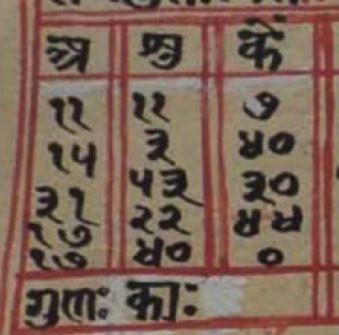The Table Text Jagadbhūṣaṇa of Haridatta
The First Chapter on the Sun and the Moon
DOI:
https://doi.org/10.18732/hssa102Keywords:
Sanskrit astral sciences, Ancient Indian texts, JyotiṣaAbstract
In the seventeenth century, the astronomer Haridatta of Mewar, Rājasthān, produced a table text named the Jagadbhūṣaṇa (epoch Śaka 1560, or 1638 CE). This table text provided calendar makers with a complete set of data and associated procedures for the computation of the annual calendar known in Sanskrit as a pañcāṅga. The tables are huge and represent an enormous computational effort, and the astronomical structure that underlies them is somewhat akin to the Babylonian Goal Year texts and similar cyclic schemes set out by Ptolemy and al-Zarqālī. The accompanying text consists of around one hundred and thirty verses organised into five chapters. This article is the first in a series that presents the Sanskrit text of the Jagadbhūṣaṇa along with a translation and a detailed technical commentary of the text and analysis of the associated tabular material, chapter by chapter. In the opening chapter, Haridatta begins the work with a lengthy encomium to his patron, Mewar Rajput Jagatsiṃha, before describing the procedures by which the true longitudes and motions of the sun and the moon can be determined using the accompanying tabulated data.
Downloads

Downloads
Published
How to Cite
License
Copyright (c) 2024 Keshav Melnad, Clemency Montelle, Ramasubramanian K.

This work is licensed under a Creative Commons Attribution-ShareAlike 4.0 International License.
Authors who publish with this journal agree to the following terms:Authors retain copyright and grant the journal right of first publication with the work simultaneously licensed under a Creative Commons Attribution-ShareAlike license that allows others to share the work with an acknowledgement of the work's authorship and initial publication in this journal.
Authors are able to enter into separate, additional contractual arrangements for the non-exclusive distribution of the journal's published version of the work (e.g., post it to an institutional repository or publish it in a book), with an acknowledgement of its initial publication in this journal.
Authors are permitted and encouraged to post their work online (e.g., in institutional repositories or on their website) prior to and during the submission process, as it can lead to productive exchanges, as well as earlier and greater citation of published work (See The Effect of Open Access).



